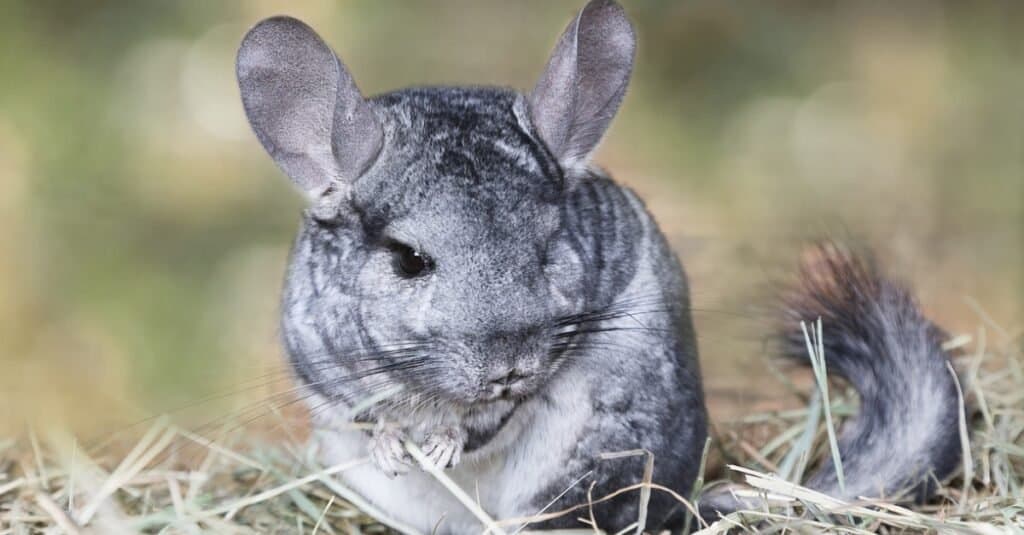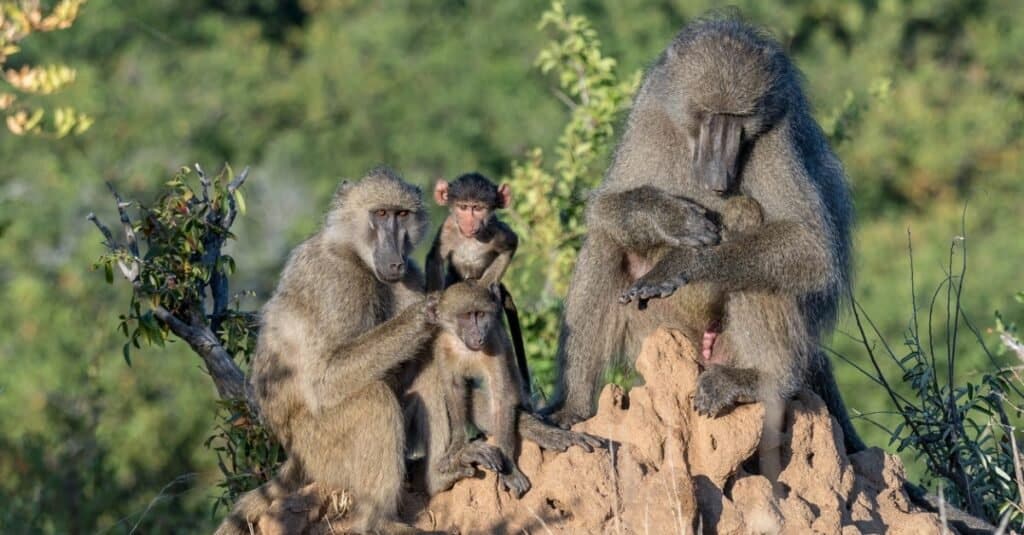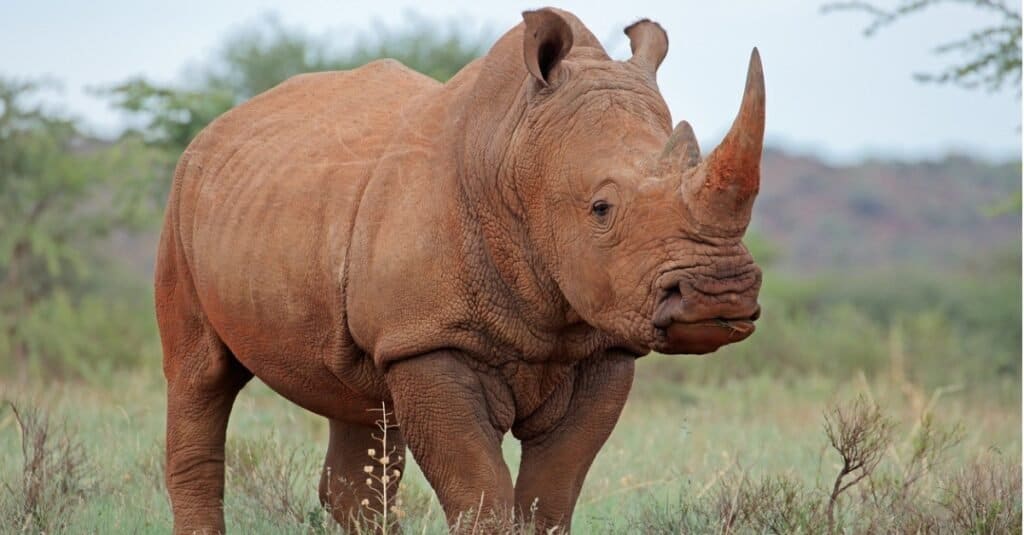Key Points:
- There are approximately 6,495 recognized species of mammals on the planet. There are always new ones being discovered, with over 1,000 recognized between 2005 and 2018.
- 40% of the world’s mammal population is rodentia. They are distinguished by a continuously growing pair of incisors.
- Homo sapiens belong to the species primates, and far outnumber other primates, numbering over 7.7 billion.
Mammals represent one of the most diverse groups of creatures within the animal kingdom, and it all comes down to their warm-blooded nature. Mammals can maintain higher body temperatures than reptiles and amphibians, and that provides them with higher metabolisms and the ability to generally be more active.
The result is a series of evolutionary developments — including a cleverly designed diaphragm for more efficient oxygenation, a four-chambered heart to facilitate mobility and activity, and two-pieced jaws designed to benefit both herbivores and carnivores.
Mammals first appeared roughly 200 million years ago, and that means that there has been a lot of time for mammals to evolve in a multitude of fascinating directions. But how many different animal species are there today?
Total Number of Recognized Species: Approximately 6,495
Keeping track of all the known species can be difficult, as new species are being discovered more quickly than you might imagine. In fact, the 13 year period between 2005 and 2018 saw an increase in 1,079 recognized mammal species. One factor is the lack of thorough tabulation in the period up until the early 21st century, but it’s estimated that roughly two dozen new species are discovered in the average year.
The American Society of Mammalogists created the Mammal Diversity Database to track the discovery of new species and classification examples in real-time. Whereas earlier classification systems for mammal species relied on volumes published infrequently, the internet has allowed the MDD to be updated in real-time. Through the thorough examination of peer-reviewed studies, as they’re published, it remains the most accurate database for the classification of mammal species.
But understanding the number of mammal species as a raw number doesn’t necessarily convey the scope and variety of mammals out there. Fortunately, taxonomy breaks down the genealogy of mammals by splitting them into different orders. Fortunately, the Mammal Diversity Database also tracks species numbers according to what order they belong to. Here’s how the numbers break down.
Order Rodentia: Approximately 2,606 Species

©iStock.com/alkir
A staggering 40% of the world’s mammal population belongs to Order Rodentia, which includes everything from the widely dispersed mouse to the enormous and universally gregarious capybara. Rodents are all distinguished by the presence of continuously growing incisors that need to be used frequently to prevent potentially fatal overgrowth.
Order Chiroptera: Approximately 1,447 Species
All living bats belong to Chiroptera — and they’re unique among mammals for having developed the means for powered flight. That makes them distinct from animals like flying squirrels which can merely glide on wind currents. Examples include the fruit bat, little brown bat, and hoary bat. Approximately 20% of mammal species belong to Order Chiroptera.
Order Eulipotyphla: Approximately 548 Species
Hedgehogs, moles, and shrews all belong to Order Eulipotyphla — but they share the common characteristic of ranking among the most primitive of mammal species. Most members of this order are insectivores, and most are blind or exhibit exceedingly poor eyesight. To make up for this, species like the star-nosed mole have developed exceptional senses of touch to compensate.
Order Primate: Approximately 515 Species

©Grobler du Preez/Shutterstock.com
Humans are the most advanced primates, but we share the order with species as diverse as the baboon and the mountain gorilla. The common ancestor of all primates were tree-dwelling species — and that also led to the development of more sophisticated and articulated fingers. Primates are often also characterized by their comparatively large brains.
At one point in the last million years, the survival of homo sapiens (humans) was threatened, and sunk to an estimated 18,500 in existence, while apes and other primates far outnumbered us. But now, the population of gorillas, orangutans, and chimpanzees has sunk to around 500,000, while other species of primates are critically endangered. However, homo sapiens are numbered at over 7.7 billion. Sadly, our ability to multiply has threatened the existence of countless other mammals on Earth,
Order Artiodactyla: Approximately 356 Species
Members of order Artiodactyla are also known as even-toed ungulates — which is another way of referring to animals that have hooves. They constitute the most diverse grouping of large herbivores on the planet, and examples include everything from the common deer to the mighty giraffe. And while whales no longer have hooves, they descend from the same ancestors as artiodactyls and are classified as members of the order.
Order Carnivora: Approximately 304 Species
Members of Carnivora all share common ancestors that developed long and pointed canines for disabling prey and tearing flesh — but examples also include omnivores like the black bear and raccoon. All species in this order also display front legs with five claws that were developed for both mobility and immobilizing prey.
Order Diprotodontia: Approximately 150 Species

©Constantin Stanciu/Shutterstock.com
A majority of the planet’s marsupials belong to this order, but they include members with very distinct designs ranging from the koala to the wombat to the kangaroo. What they share in common are sets of incisors that are designed for chewing up leaves as well as conjoined digits on their rear limbs.
Order Didelphimorphia: Approximately 127 Species
Opossum species that evolved in the Americas are members of Order Didelphimorphia. They’re also marsupials that can be distinguished by their strong incisors and absence of canines, but all American opossums have five upper incisors and four lower incisors. Unlike members of Order Diprotodontia, most opossums are carnivores or omnivores.
Order Lagomorpha: Approximately 107 Species
Rabbits, hares, and pika are all classified under Order Lagomorpha. While the small build and overgrown incisors make these animals resemble rodents, they share parallel but individual evolutionary histories. Unlike rodents, lagomorphs have four incisors at the top of their mouth rather than just two.
Order Dasyuromorphia: Approximately 77 Species

©Craig Dingle/Shutterstock.com
The carnivorous marsupials that make up this order are exclusively found in Australia and nearby islands like New Guinea and Tasmania. Examples include the Tasmanian devil and the family of animals known as quolls. The first members of this species appeared about 55 million years ago.
Order Afrosoricida: Approximately 55 Species
South African golden moles, Madagascar tenrecs, and African otter shrews were once classified in Order Eulipotyphla, but a deeper examination of their origins demonstrated divergent ancestry. Today, they and other regional creatures occupy their own Order in a demonstration that sometimes parallel evolutionary traits can develop in isolation.
Order Scandentia: Approximately 23 Species
Derived from the Greek word for “climber”, the tree shrews that make up this order are found only in the Asian subcontinent and surrounding islands. Many species look and act quite similarly to squirrels, but they share more common ancestry with primates.

©iStock.com/Saddako
Order Cingulata: Approximately 22 Species
Found exclusively in the Americas, the creatures belonging to Order Cingulata are more commonly known as armadillos. Their most distinguishing characteristic is certainly their armored carapace, and cingulates mostly subsist on a diet of insects and invertebrates.
Order Peramelemorphia: Approximately 22 Species
Members of this order closely resemble rodents, but they are found exclusively in Australia and on surrounding islands. They constitute the majority of omnivorous marsupials alive today. The order consists of bandicoots and bilbies, the latter of which don’t even need to consume water.
Order Macroscelidea: Approximately 20 Species
Similar to how Afrosoricida was redefined as an order distinct from similar creatures on the other side of the country, elephant shrews have been moved from Afrosoricida into their own order. Resembling small mice, these species have extended rear legs that allow them to leap long distances.
Order Perissodactyla: Approximately 18 Species

©EcoPrint/Shutterstock.com
Some of the most prominent large grazing animals on the planet belong to Perissodactyla. Species like the zebra, rhinoceros, and horse all share in common the fact that they possess hooves with an odd number of toes. Depending on the species, they may either apply their weight on three toes or merely one.
Order Pilosa: Approximately 16 Species
Order Pilosa only has living representation in the Americas, but anteater and sloth species both fall under its umbrella of classification. While these creatures may look quite different, they share longer tongues along with receded teeth that allow them to more effectively feed on insects. They also both share extended forelegs with sharp claws designed for digging up prey.
The Other Orders
While the order classifications above cover most of the mammals on the planet, there are a variety of smaller orders that are home to species in the single digits. These include proboscideans — which are home to the two elephant species still alive. The aardvark is the sole member of Order Tubiulidentata. Dermoptera is nearly as lonely since it’s home to merely two species of lemurs. Order Monotreme consists of only the duck-billed platypus and four species of echidna, but its members are wholly unique among mammals due to the fact that they lay eggs rather than giving birth to live young.
Summary of the Number of Species of Mammals
| Rank | Species | Approximate Number |
|---|---|---|
| 1 | Rodentia | 2,606 |
| 2 | Chiroptera | 1,447 |
| 3 | Eulipotyphla | 548 |
| 4 | Primate | 515 |
| 5 | Artiodactyla | 356 |
| 6 | Carnivora | 304 |
| 7 | Diprotodontia | 150 |
| 8 | Didelphimorphia | 127 |
| 9 | Lagomorpha | 107 |
| 10 | Dasyuromorphia | 77 |
| 11 | Afrosoricida | 55 |
| 12 | Scandentia | 23 |
| 13 | Cingulata | 22 |
| 14 | Peramelemorphia | 22 |
| 15 | Macroscelidea | 20 |
| 16 | Perissodactyla | 18 |
| 17 | Pilosa | 16 |
| 18 | Other |
Up Next…
- 7 Extinct Primates Learn about 7 primates that once existed, but are now extinct on our planet Earth.
- Do Mice Really Like Cheese? Myth vs Reality Mice are stereotyped as loving cheese. Is that really the case? Find out in this interesting article.
- 10 Incredible Gorilla Facts Gorillas are fascinating creatures. Discover 10 amazing facts about them in this read.
The photo featured at the top of this post is © iStock.com/Shawn Levin
Thank you for reading! Have some feedback for us? Contact the AZ Animals editorial team.







